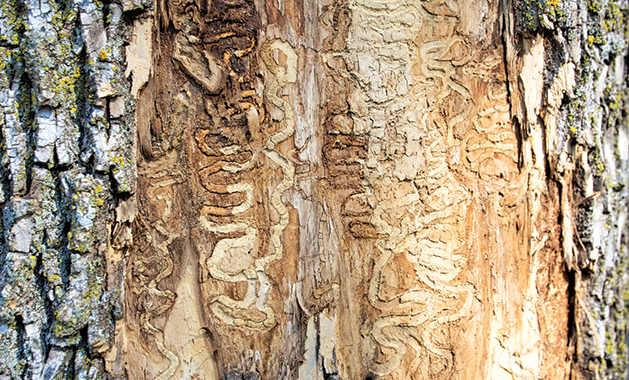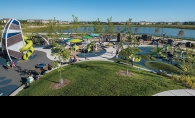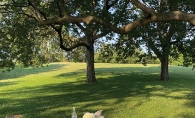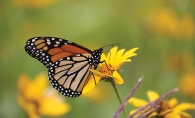
Since the first infestation of Emerald Ash Borer (EAB) was reported in Michigan in 2002, the invasive Asian beetle has killed tens of millions of ash trees nationwide. The pest was first discovered in Minnesota in 2009. The city of Maple Grove has been preparing for the encroaching threat for nearly five years, with public education outreach and a tree inventory program focused on identifying EAB, slowing its spread and leveraging city resources for damage control.
In January, the first EAB infestation in Maple Grove was confirmed after one of the city’s tree inspectors found EAB on a tree in his yard. Subsequently, an official survey was conducted, branching out from the initial site to assess the extent of the beetle’s presence.
“We identified 21 infested trees
north of County Road 30 between Maple Grove Parkway and Fernbrook Lane,” says Joseph Bennett, Maple Grove’s street supervisor.
The city’s focus is on mitigating the environmental and aesthetic impacts of EAB through treatment and removal of diseased trees, as well as increasing Maple Grove’s tree diversity to lessen the damaging consequences of tree pests and diseases in the future.
While the city is responsible for treating, removing and replacing publicly-owned trees, residents are required to remove dying trees on their property or, if the infestation is in the early stages, treat them with pesticides. Residents may also take responsibility for treating public trees they don’t want removed.
“There’s been great success treating trees prior to infestation and prolonging the life of trees with treatment,” Bennett says, though he notes that it’s a long-term investment, as an infested tree needs to be treated every other year for the rest of its life. Treatment for a ten-inch tree would be $60 every time, he says.
City staff and volunteers continue to monitor the spread of EAB in Maple Grove, but residents are encouraged to learn to identify the signs of EAB and to contact the city if they suspect an infestation on their property.
While ash tree removal will impact the leafy charm of the city, cutting and replanting efforts will be staggered to minimize canopy loss. Up to 300 new trees are currently being planted, with another 200 soon to follow, thanks to the combined efforts of Maple Grove and Hennepin County, as well as a grant from the Minnesota Department of Natural Resources.
“The biggest thing we’ve learned is to diversify,” Bennett says. “Fifty percent of our trees are either ash or maple, but we took a stance that all trees that the city plants from here on out will be diverse, native species.”
Increasing species diversity decreases the chances of a single pest or disease, like Dutch elm or oak wilt disease, having a disproportionate impact on the city’s look and budget.
“When something new comes along, we won’t be losing 30 percent of the trees in the city,” he says. “It won’t be like this next time.”
For more information on community efforts to combat EAB, including resources for identifying the signs of EAB, educational videos, tree stewardship and citizen pruner classes, volunteer opportunities and links to city ordinances, visit the website here.









